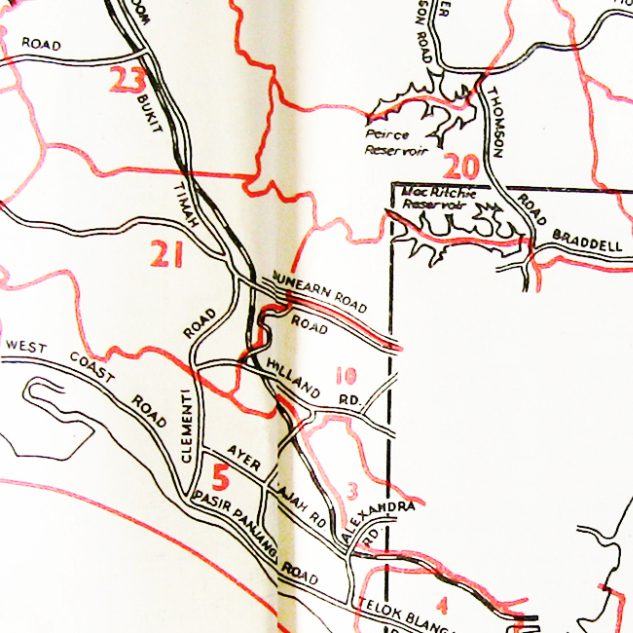
INTERACTIVITY
“As We May Think” is a visionary text and predicted (to a certain extent) our present-day dependency on personal computers, the internet and its many tools like the online encyclopedias and the ubiquitous use of hypertext. Indeed, in his text, Vannevar Bush highlighted his concerns on how information needed to be managed and ‘controlled’ in order for scientists (and more importantly the everyday man on the street) to benefit from being introduced to the information hyperspace. Bush envisioned much of the present-day use of technology like retrieving several articles, pictures of moving images on a single screen more than seven decades ago. His belief that people will one day create ‘links’ between related writings, to enable a fascinating mapping of thoughts and narrative paths for each user, has in some ways come true. In the year 2018, people are experiencing a new form of information enhanced by technology- that of the hypermedia. As highlighted in Kay and Goldberg’s seminal text “Personal Dynamic Media” in 1977, the idea of creating a personal computer will be a large step forward in sharing information and a new and improved medium of communication between persons. Kay believed that:
When normal people start creating and sending each other simulations as a way to exchange ideas, a new revolution will happen, similar to the one which the printing press eventually led to. People will be able to exchange more interesting ideas and will be able to have deeper conversations than they could before.
The experience of sending each other ‘simulations’ is very much an element (amongst many elements) of Mark Amerika’s artwork Grammatron that seeks to have deeper conversation(s) with readers (or visitors). The interactivity of the written (or narrative) form is experienced in Grammatron, an early example of a hypermedia artwork. The 1997 artwork was groundbreaking in many ways and exploded onto the new media art scene as a form of ‘Internet Art’ or ‘Net Art’. Grammatron is inspired by Derrida’s Of Grammatology, an examination of the relation between speech and writing, more importantly, it is an investigation of how speech and writing development as forms of language. Mark Amerika utilises the early incarnations of hypertext links to devise a fusion of text, images and moving images in a networked environment that is immersive, beguiling and set against a ‘re-mixed’ soundtrack- multisensorial.
The hypertext pages invites the visitor to immerse oneself in the narrative by clicking on highlighted texts while viewing the sequence of static images, animated images and text-based images that populate the sequential pages. We (the visitors) is brought along playful codes of interactivity that leads Golam (The character alludes to the Medieval Jewish legend of the Golem, a servant made of clay and brought to life- a prototype for man-machine myths from Frankenstein to the Terminator) through a hybridised world made up of metafiction, hypertext, cyberpunk; and most importantly a personification of Amerika the artist. The project is made up of many layers of meaning, where the visitor is sucked into the networked environment that is, on one hand, an experiment by the artist and a meta-critique of the ‘web culture’ of the early 20th century. Amerika has produced an iconic (and somewhat troubling) artwork that experiments with the evolving technology that is the World Wide Web. More importantly, the work is a prophecy on the coming control that the internet will wield over our lives.
In going back to Bush’s “As We May Think”, the visionary and prophetic nature of this text is eerily accurate in how he sees that:
There is a growing mountain of research. But there is increased evidence that we are being bogged down today as specialization extends. The investigator is staggered by the findings and conclusions of thousands of other workers.
Bush’s paper aptly pre-empts concerns of generations to come, a society that has become fed on the open knowledge spaces arising from the proliferation of the internet. The 21st Century has become a mine-field of information, where the ‘information explosion’ that rose from the demands of war(stemming from the warfare needs of the Second World War) gradually developed into an unprecedented demand on scientific production. The rapidity of scientific development resulted in investigators (or the everyday person) swiftly becoming bogged down by the excesses of information. In many ways, the Grammatron non-linear narrative satirises the way computer networked environments become breeding grounds for unethical practices, particularly the penetration of our creative and research spaces with the mindless info-spam of an invasive techno capitalism vision gone wrong. Similar to how Abe Golam searches for his “second-half” in the web of interactivity that is Grammatron, where both Golam and the visitor (or reader) is brought through a labyrinth of multi-layered textscapes where they search for “the missing link”, the internet has become for us a hyperspace filled with fake news, viruses and mindless info-spam.



